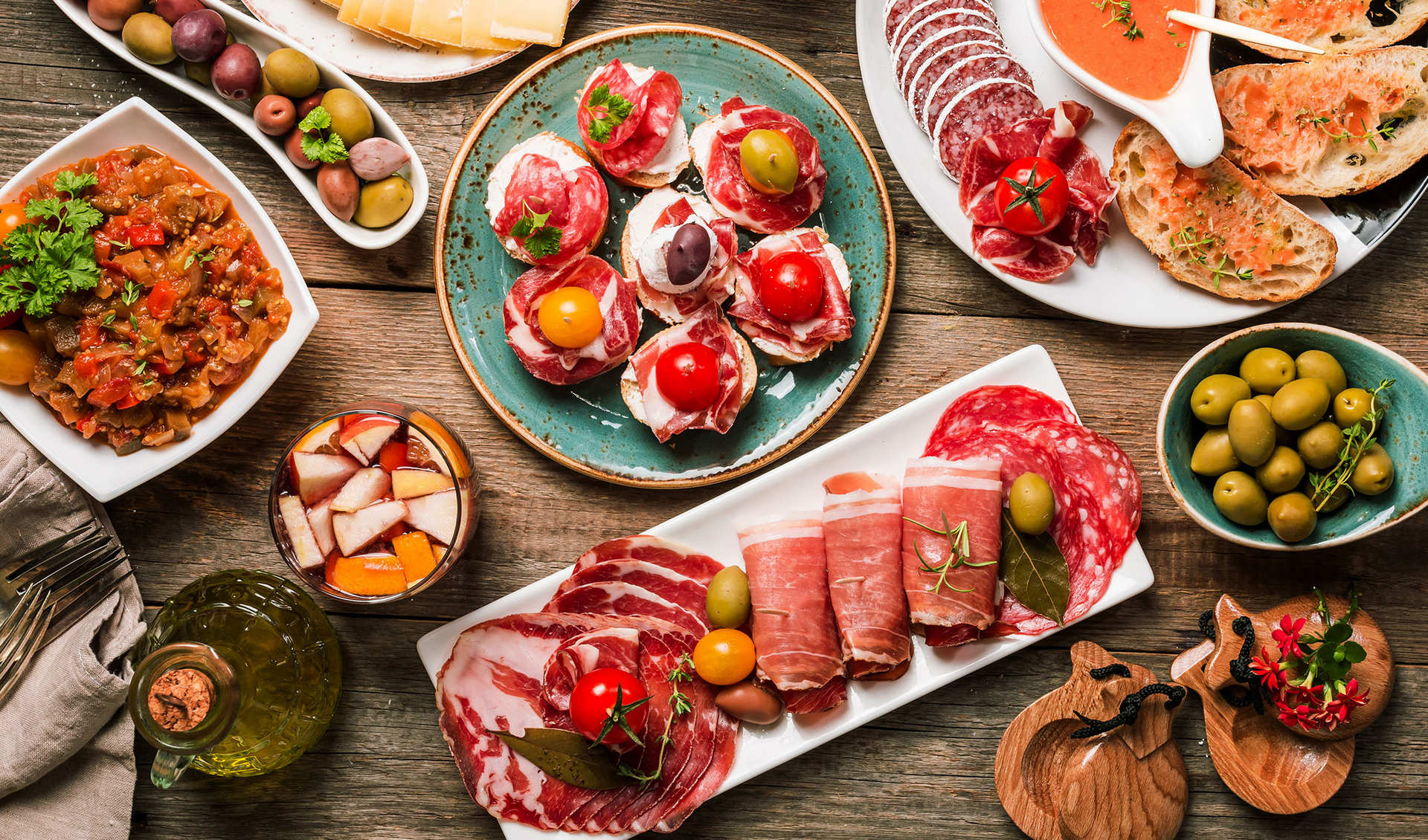The Iberian Peninsula is home to a major European country — passionate, free-spirited, sunny Spain. Travelling here will give you unforgettable impressions. What does a traveller associate Spain with? Of course, with bullfighting, medieval castles, incredible creations of Gaudi, great Salvador Dali and Picasso.
The beautiful beaches of Catalonia, the Balearic and the Canary Islands attract tourists. However, any traveller will tell you that holidays in Spain are not only about sightseeing and excellent beaches but also about the delicious traditional cuisine, the dishes of which are worth getting to know better. That is what we will talk about in our article.
National cuisine has absorbed elements from Roman, Moorish, Italian, French and African cultures. Depending on the region, the composition and methods of cooking differ significantly. What to try in Spain food, what are the prices for food and how much it costs to eat — let's learn more about these important questions in detail.
Contents
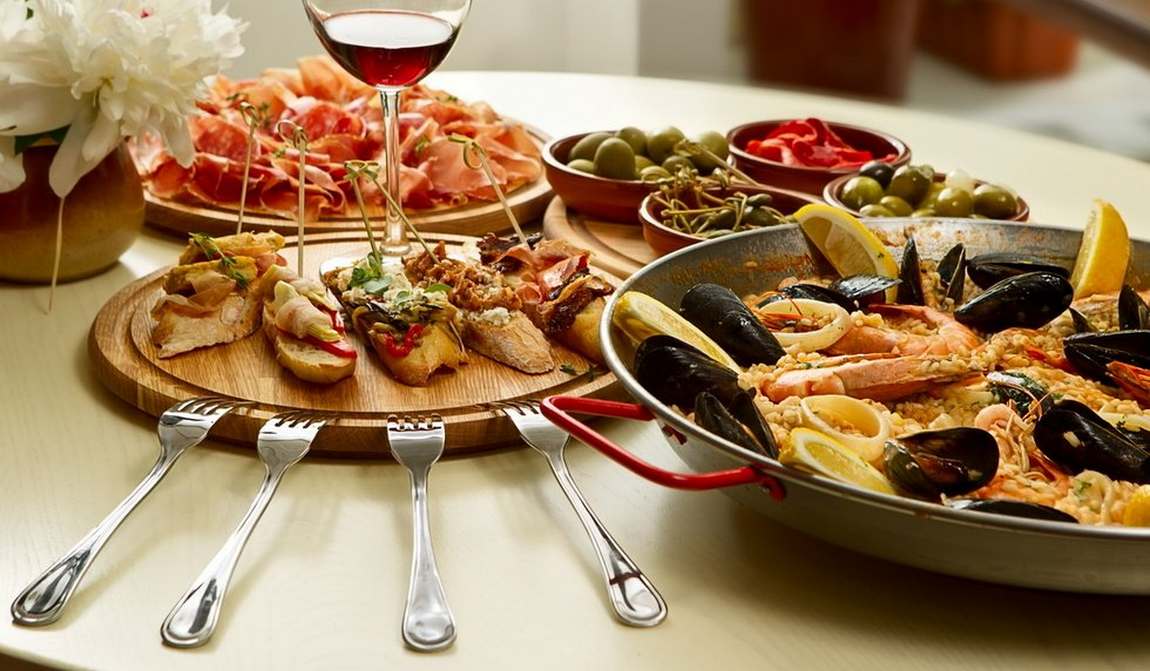
Traditional Spanish dishes you need to try
The local chefs offer a variety of dishes, so it's safe to say that more than a few months will be needed to try everything. But some traditional dishes are a must-try while on holiday. Here is a short list of the top things to eat in Spain:
- Potato tortilla (Tortilla de Patatas) is one of the most famous national dishes. It was once considered the dish of the poor, but now it can be found in any restaurant. It is the classic Spanish omelette recipe made with only 5 simple ingredients: potatoes, olive oil, eggs, salt and onion.
- Gazpacho is a famous cold tomato soup. There is also a bean version of it. Besides tomatoes, it includes onions, cucumbers, garlic and olive oil. Gazpacho is commonly served with toast, peppers, and sometimes with ice.
- Paella is Spain's most popular food, made from rice with various additives. Most often, seafood and saffron are used as additives; meat and vegetables are used a little less often. Paella's recipes are varied, and several hundred of them are in total.
- Cuttlefish stuffed with ink, a very unusual and exotic dish.
- Espetos — sardines grilled over wood.
- Malaga salad — is one of the most famous Spanish salads with a savoury combination of products: potatoes, oranges, olives and fish.
- Crema Catalana is a trendy dessert of Catalan cuisine. The recipe is similar to the French crème brûlée, but it is made with milk instead of cream. Crema catalana is a delicate soufflé covered with caramel.
- Jamon is the most famous Spanish snack. It is a raw, dried pork leg cut into thin slices.

Seafood in Spain is a hallmark of the national cuisine.
In addition to the usual prawns, oysters and some fish species, the Spanish coastline is home to some rather unusual sea creatures, such as truffles, scallops, lobsters, European anchovies and white tuna.
Local chefs prepare extraordinary delicacies from them. If you are wondering what to eat in Spain, you should try seafood dishes first.
Food prices in Spain
When travelling, you should remember that the Kingdom of Spain is a European country, so you should not count on low prices. Of course, as anywhere in the world, the tourists can find a food option according to their budget. However, this issue should be considered in advance, considering all opportunities and finding out what the prices for food in Spain are.
The most budget option is to cook your food, but you will need to rent an apartment with a kitchen. Let's dwell more on where you can buy food.
The best solution is to shop where the locals prefer to shop. It should be noted that it is customary to stock up on food once a week, usually on Saturdays, as many shops are closed on Sundays.
Food prices 2025
Prices in Spain are average European, but they depend heavily on the season and the location of the shop or market. So, how much do groceries cost in Spain? Here are some example prices in euros:
| Rye bread | 1 loaf | 1,5 |
| Milk | 1 l | min. 0,9 |
| Greek yogurt | 6 pcs. | 1,6 |
| Baguette | 1 pcs. | 0,5 |
| Croissant | 1 pcs. | 0,35 |
| Rice | 1 kg | 1,30 |
| Chicken fillet | 1 kg | 7 |
| Pork (fillet) | 0,3 kg | 2,3 |
| Veal (fillet) | 0,5 kg | 4,9 |
| Jamon | 0,1 kg | min. 3,6 |
| Salmon (steak) | 0,35 kg | 6-8 |
| Chorizo sausage | 1 kg | 11 |
| Eggs | 12 pcs. | 2,4 |
| Tuna | 0,16 kg | 3,69 |
| Apples | 1 kg | min. 1,5 |
| Bananas | 1 kg | 1,05 |
| Nectarine | 1 kg | 1,99 |
| Oranges | 1 kg | 1 |
| Lemons | 1 kg | 2 |
| Codfish | 1 kg | 9 |
| Shrimps | 1 kg | min.10 |
| Avocado | 0,5 kg | 1,65 |
| Kiwi | 1 kg | 2,95 |
| Mango | 1 pcs. | 1,3 |
| Tomatoes | 1 kg | min. 1,4 |
| Cucumbers | 1 kg | min. 0,9 |
| Cauliflower | 1 kg | 1,2 |
| Carrot | 1 kg | 0,79 |
| Potato | 1 kg | 1,1-1,3 |
| Onion | 1 kg | 1 |
| Zucchini | 1 kg | 1,09 |
| Broccoli | 0,33 kg | 0,89 |
| Hazelnuts | 0,2 kg | 2,8 |
| Pistachios | 0,25 kg | 3,3 |
| Juice | 1 l | min 0,8 |
| Water | 1,5 l | 0,6-0,7 |
| Coca Cola | 1,5 l | 1,49 |
| Fanta | 2 l | 1,5 |
| Chocolate | 0,1 kg | min. 1 |
| Galette biscuits | 0,8 kg | 1,6 |
| Beer | 0,33 l | min. 0,3 |
| Wine | 0,75 l | min, 1,4 |
*Prices are taken from online supermarkets and are indicative. Prices for fruit and vegetables may vary depending on the season.
Supermarkets in Spain
The most common European retail chains are also well represented in this country: Lidl, Continente, Pryca, El Dia, and Alcampo. Each of them offers its system of discounts and bonuses. Usually, supermarkets are located near big road junctions.
The same retail chains have slightly smaller shops located along the motorways, which are called roadside supermarkets. The assortment here is less rich, but you can find everything you need: tinned food, dairy products, cereals, bread, wines, etc.
In large cities, you can find such supermarkets as Masymas, Dialprix, Mercadona and Consum. The most famous and popular among them is Mercadona.
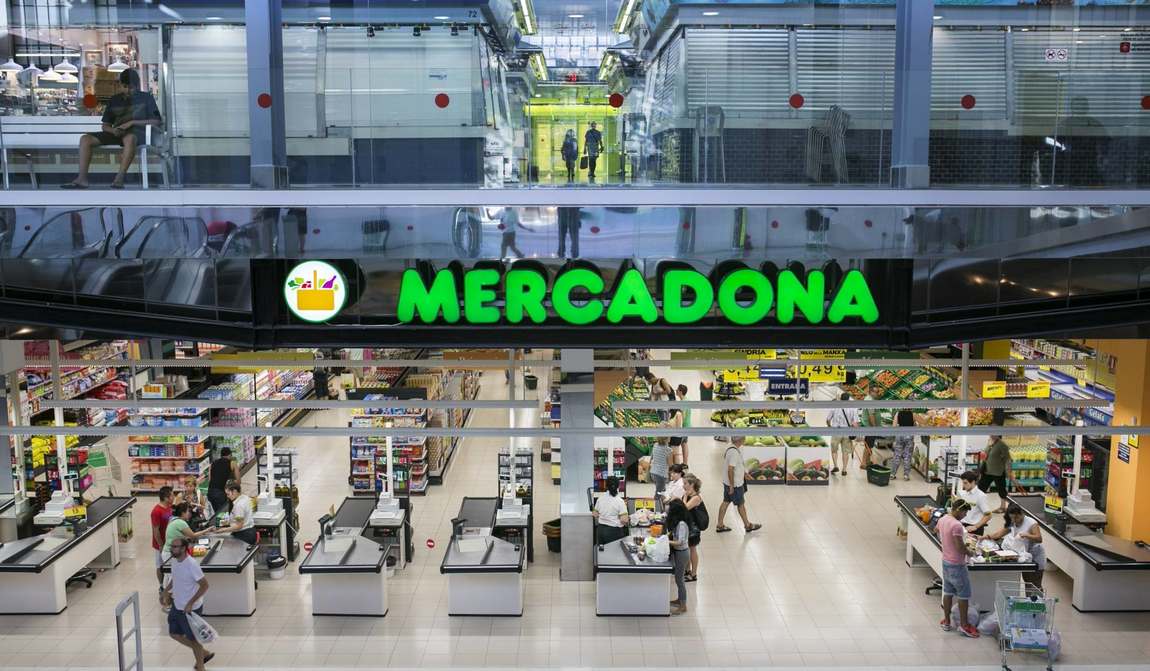
Locals say that Mercadona sells the best quality products. You can find here a rich selection of products, and the bonus is free additional services: cleaning fresh fish or preparing minced meat from purchased meat.
Outside the population centres and on the outskirts of metropolises are Carrefour and Eroski hypermarkets. Although they offer a wide range of products and lower prices, it is difficult: private transport is required.
In El Corte Ingles shopping centres, supermarkets on the ground floor offer delicacies and luxury products, but the price level is in line with the range. These shops are not very common, and you can find them only in larger cities.
Some of the cheapest supermarkets in Spain are Mercadona and Dia.
In Spain, 'tiendas' — small specialised food shops — are popular. Here is a brief list of Spanish tiendas:
- рanaderia – bakery or mini-bakery. It should be noted that fresh bread and pastries can only be bought here. Supermarkets sell less tasty bakery products, which are often sold frozen;
- pescaderia – a seafood shop;
- carniceria – a butcher shop;
- charcuteria – cheese shop. You can also buy jamon here;
- floresteria – a flower shop;
- fruteria – a fruit shop;
- verduleria – a vegetable shop.
You can buy fresh herbs, fruit and vegetables straight from the garden at farmers' markets or market stalls. If you want to save a lot of money, going there in the afternoon makes sense.
Best restaurants in Spain
For a taste of the country and its culture, plan at least one dining experience. Michelin restaurants abound in the kingdom, a testament to its cuisine and service culture.
Spain currently ranks second in the world regarding the number of such high-class establishments. However, the restaurant category strongly influences its pricing policy.
If you notice a large red Michelin sticker on the glass in front of the entrance to a restaurant, it means that you are looking at a high-class place that professional critics have rated.
Recall that the Michelin restaurant rating was first published in 1900. It included the most worthy restaurants in France. Over time, this catalogue, called the "Red Guide", was used worldwide in many countries.
The category is estimated from one to three stars and indicates the restaurant's prestige. Even mentioning a restaurant in this rating without awarding it stars contributes to the institution's financial success.
When planning a visit to a restaurant, you should find out in advance about its working hours. It is because most of them close for an hour and a half for lunch, and on Sunday or Monday, there may be a day off.
Prices in cafes and restaurants 2025
As mentioned above, Spain and France can boast high cuisine offered by Michelin restaurants. Let us take a closer look at the prices shown by mid-range cafes and cafeterias and high-class restaurants in Spain.
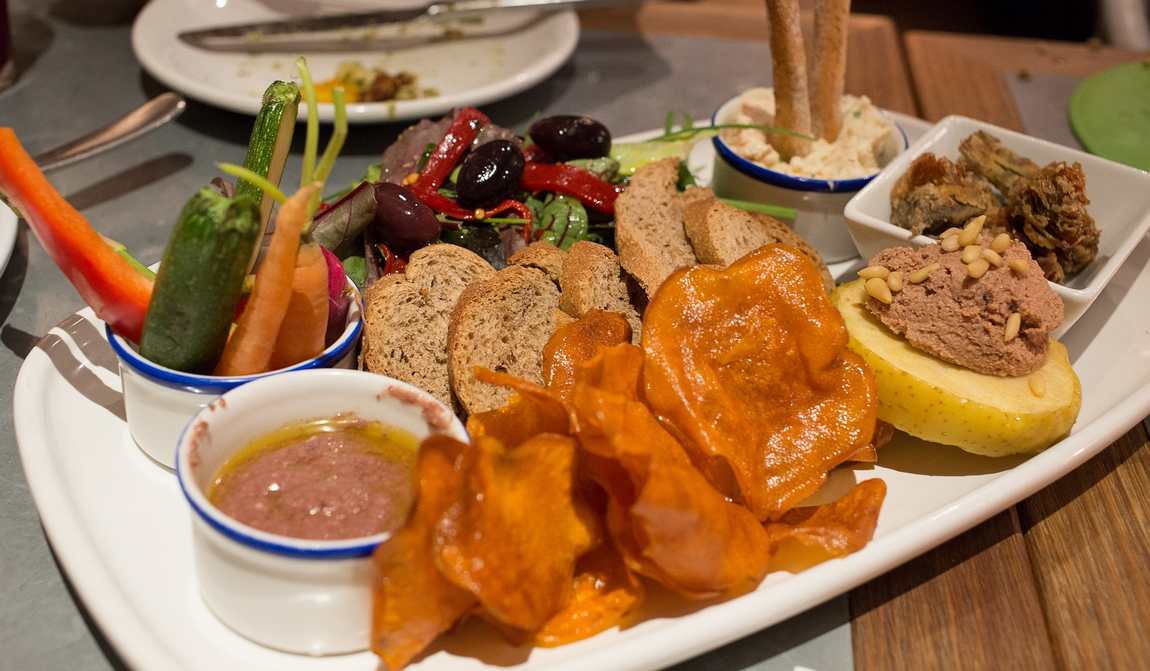
If you are interested in a budget type of food, consider places where locals prefer to eat. It guarantees that your lunch will be prepared quickly, and it will be tasty and relatively inexpensive.
If we take an average, then in an ordinary cafe, the cost of meals varies from 6 to 15 euros. Pay attention to set lunches, which are called "del día". With this option, the dishes will cost less than if you buy them separately.
So, how much does it cost to dine out in Spain?
- set lunch including first course, dessert and a drink — 10-20 euros;
- buffet — 12.5 euros;
- pasta carbonara — min. 8 euros;
- a jug of sangria — 12 euros;
- a bottle of wine — min. 10 euros.
The cost of food in inexpensive cafes:
- a light breakfast consisting of potatoes, scrambled eggs and sausage — about 10 euros;
- English breakfast, which includes an omelette with bacon, bread, vegetables, tea or coffee — nearly 15 euros;
- pasta — min. 9 euros;
- seafood dish — min. 12 euros;
- paella — 8-10 euros per portion;
- half a chicken — 9 euros;
- pizza — 8-10 euros;
- Jamon with melon — 9 euros;
- spaghetti — min. 9 euros;
- coffee with croissant or bun — 3,5 euros;
- tarts with fresh fruit — min. 2 euros.
For budget travellers, meals offered in the Nostrum café chain are a great option. Here, ready-made boxes of fresh food (soups, pasta, rice, vegetables, meat, fish, meatballs, desserts, fruit) are sold.
You can have a snack directly in the café or take the food, neatly packed in boxes, back to your hotel or apartment. On average, a soup at Nostrum costs 3 euros and a main course 4-5 euros.
And here is information on how much it costs to eat in Spain in cafes for locals. Outwardly, they are not so presentable, but the food there is usually excellent, and the prices are reasonable:
- grilled steak (300g) — 15 euros;
- sausage with a side dish — about 9 euros;
- salads — min. 6 euros;
- gazpacho — min. 5 euros;
- fish dishes — min. 10 euros.
Sweet lovers in any city can visit pastry shops and coffee shops. Approximate assortment and prices:
- baguette — up to 1 euro;
- muffins — about 1.5-2 euros/piece;
- pastries — 2 euros/piece;
- espresso — 1,5 - 2 euros;
- cappuccino — 2.2 euros;
- macchiato — 2.5 euros;
- fresh juice — up to 4 euros;
- latte — 2 euros.
Eating out in Spain for tourists in popular places and expensive restaurants is quite different in terms of prices. Here is a sample menu of one well-known restaurant:
- fish dish — 25 euros;
- paella with prawns — 23 euros;
- steak (300 g) — 20-30 euros;
- salads — 7-10 euros;
- sangria (1 litre) — 12 euros;
- spaghetti — about 10 euros;
- dessert — 1-5 euros.
Important: If there is a note "IVA includo" next to the price on the menu, it means that VAT is already included in the cost of the meal. If the word "includo" is not next to the price, you will have to add 8% to the price.
Unlike in other countries, servers are paid a fixed salary in Spain, although it is usually not very high. Therefore, the basic rule is as follows: if a customer orders only coffee or beer, he can leave a symbolic amount for a tip. If he orders a lunch or dinner costing 30-40 euros, then a tip of 2-3 euros is considered standard practice, and there is no need for any complicated percentage calculations.
Street food and Fast food
Spain has a well-developed fast-food industry. Let's highlight the most popular fast-food restaurant chains and tell you what they specialise in.
Rodilla is one of the most famous chains specialising in budget and affordable food. It mainly offers triangular sandwiches with various fillings, fresh pastries and drinks. Two sandwiches and a drink will cost around €7.75. Set menus and children's menus are also available.
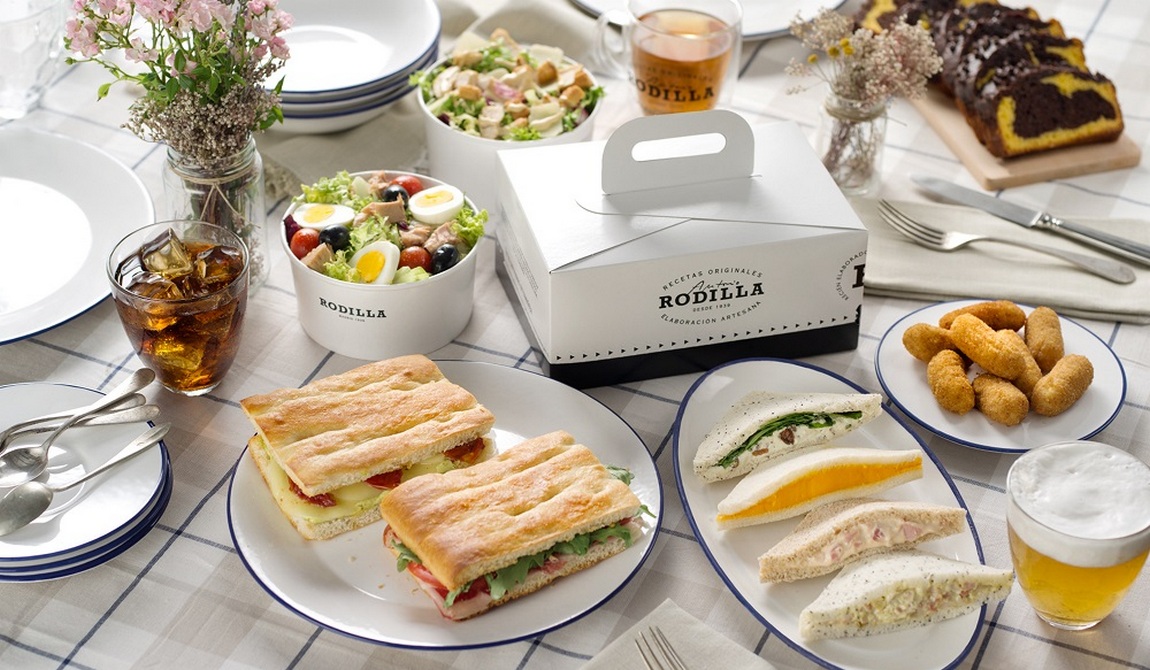
Pans and Company is a chain of sandwich shops located in almost all Spanish cities. These fast-food restaurants also bake bread and pastries. You can eat here for 7,5 euros. The price includes a portion of fries, a sandwich, juice, tea or coffee.
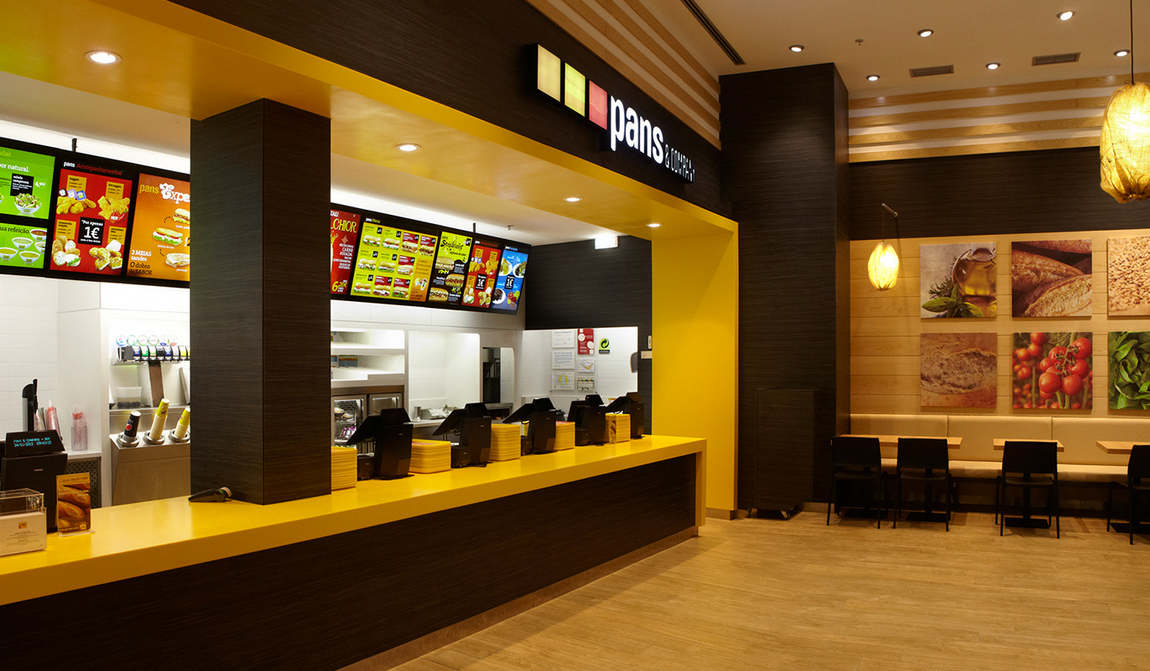
100 montaditos ("100 sandwiches") is a chain of beer halls famous for its large selection of good beer and its sandwiches with various fillings, meat and fish specialities.
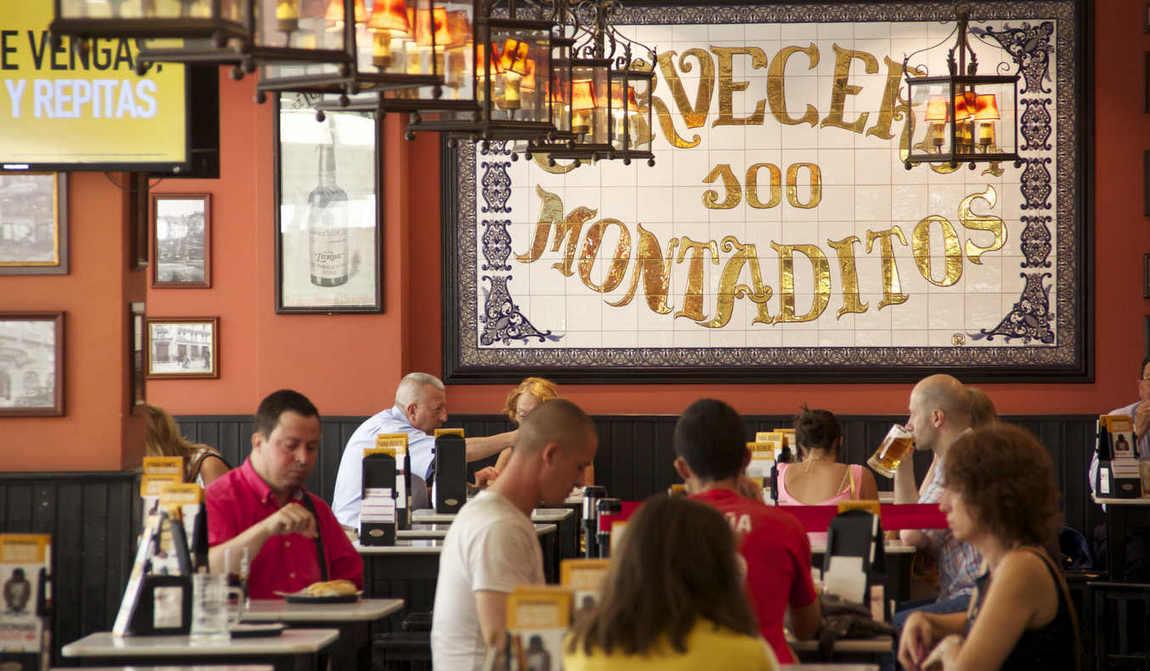
Turkish kebab shops are ubiquitous in major Spanish cities. The most popular food sold in kebab shops (shawarma) costs about 4-5 euros. In addition, you can order a full meal, which includes 250g of kebab, a side dish and a salad. It will cost about 10-12 euros. You will also be offered Turkish paella for 8 euros.
Meals at Spanish hotels
Going on a trip, many tourists wonder how to organise meals in Spain, what hotels offer and what type of food to choose. This question everyone decides individually, depending on the plans and goals of the trip.
As a rule, people go to Spain not only for a round-the-clock beach holiday but also for vivid impressions, excursions or shopping. All-inclusive hotels are rare because this type of food is not particularly popular with tourists: because of tours and walks, you have to skip meals.
That's why they often order only breakfast or half-board when booking a tour. At the same time, some hotels allow transferring dinner to lunch, having previously warned the administration of the restaurant. In many hotels, ordering lunch or dinner for a fee is also possible. Prices in hotel restaurants are reasonable.
If you choose half or full board, alcoholic and non-alcoholic drinks are charged separately. It is worth remembering this to budget extra money.
Another peculiarity of Spanish hotels is the absence of refrigerators and mini-bars in many of them. When booking a hotel, it is necessary to specify this critical point, especially if you are travelling with children.
Juices, fruit, berries, and fermented milk products, which we often take to our children for a snack, require a cool storage place. In some Spanish hotels, lunches and dinners are à la carte. You will be offered several hot meals, appetisers, and desserts, beautifully served and brought.
For many tourists, especially with small children, such a serving is not quite suitable, as it takes time, and small fidgeters are difficult to please. Therefore, consider and specify the method of serving dishes in the hotel restaurant at the stage of selection and booking.
One of the most popular types of accommodation for tourists with children is apart-hotels. Rooms in such hotels are equipped with a refrigerator and a kitchenette. The advantages are obvious: you can eat in the hotel restaurant, and if you wish, you can cook inside the apartment.
Baby Food
If you are planning your trip with a child, think about how to organise their meals in Spain at the trip planning stage.

You should consider such important factors as the children's age, taste preferences, allergic tendencies or intestinal diseases. If the child requires special nutrition, making the necessary stock, at least for the first time, is quite a wise decision.
In Spain, almost the whole range of baby food you can find in the nearest shop or pharmacy.
When booking a room or an apartment, you should specify the availability of a refrigerator and a cooker. In addition, it is desirable to take a blender with you. In shops, you will find all the familiar assortment of products, from which you can cook your baby home-made food.
All supermarkets and pharmacies offer a wide range of baby food, infant formula, jarred purees and porridges. In addition, this country's fermented milk and meat products are of very high quality. You can give them to your child or prepare baby food without fear of harmful chemicals.
Experienced tourists travelling with children note that there are no problems with finding the necessary familiar products in Spain. For example, meat and fish in shops are sold ready for cooking: fish will be cleaned and gutted, and meat will be portioned or minced at your request.
Many tourists note that children's fermented milk products have too much sugar. Buying ordinary yoghurts and cottage cheese is better, as they are quite suitable for baby food.
If you are used to first courses and do not have time or desire to cook them, you can buy gazpacho, which consists of natural products and is sold in boxes. You can use cheese, herbs and breadcrumbs as additives.
Kidpassage has dedicated an entire article to seasonal fruit as an additional important topic. Be sure to try nature's delicious and ripe local gifts, which grow in abundance all year round.
Since Spain has a well-developed tourist industry, everything here is made for the convenience of tourists, including those with children. Many restaurants and cafes are designed for visitors with small travellers.
Almost everyone has a playground or a children's room with toys and trampolines, and a special children's menu is offered.
Only often french fries, hamburgers, nuggets, fish fingers and cola can be included into "kids menu" in Spain. At the same time, on the regular menu, there are rice, chicken, and pasta dishes, which small tourists eat with great pleasure.
Be wary of exotic fruit and unfamiliar seafood, which can cause allergic reactions.
But Spanish fresh fruit, desserts, pastries and ice cream are guaranteed to be appreciated by children. Seasonal fruit and vegetables are best bought at farmers' markets. Although not as beautiful as in supermarkets, they are fresh, ripe and natural.
We will be glad if our article helps you understand such important issues as planning a budget for your trip and how much food costs in Spain. Kidpassage wishes you a pleasant holiday in this beautiful and sunny country!



